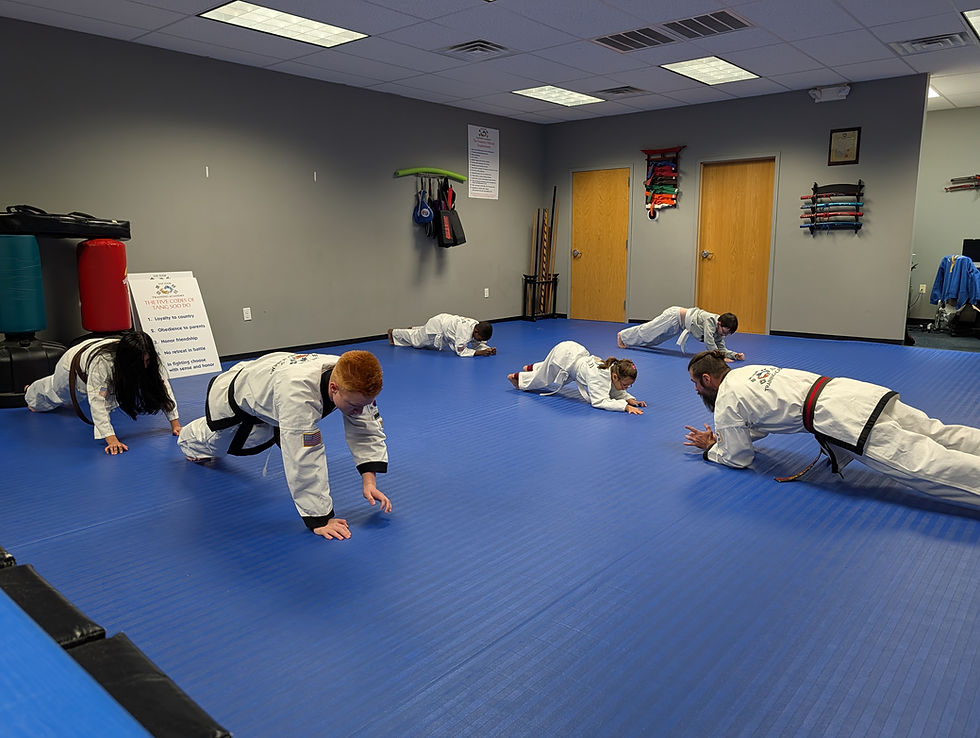Strategies for Strength Improvement and Growth Through Martial Arts and Ki Gong
- Nicholas Acri

- Nov 5
- 3 min read
When most people think of strength training, they picture racks of weights and long sessions at the gym. Personally, I’ve never been much of a fan of that environment. For me, strength has always come from practice — from the way we move, breathe, and focus through martial arts and Ki Gong. These arts offer endless ways to develop the body and mind without ever picking up a dumbbell.
For those who do enjoy traditional workouts, the beauty is that martial arts and Ki Gong can enhance everything else you do. They complement weight training, running, or yoga by adding balance, body awareness, and internal focus.
Let’s look at how you can grow stronger — inside and out — through a few key strategies.
Understanding Strength: The Balance of Internal and External
True strength is more than muscle. It’s the harmony between physical power and internal discipline. In martial arts, we train our bodies to strike, block, and move efficiently. But in that process, we also build focus, patience, and resilience.
Ki Gong takes that same principle inward — cultivating awareness of breath, energy, and recovery. Together, they form a cycle where physical training supports mental clarity, and mindfulness supports physical performance. One feeds the other, creating balance.
Building Physical Structure
In Tang Soo Do and other martial arts, we often say strength begins from the ground up. The way you stand determines how well you move and how efficiently you can generate power.
Stance training strengthens the legs and core while teaching balance and stability. Holding a low stance isn’t just a workout — it’s a lesson in patience and endurance.
Core exercises like push-ups, crunches, and planks develop the control needed to execute techniques smoothly.
Cardio and skill-specific drills — from bag work to kicking combinations — build both endurance and precision.
These are not random exercises; each one translates directly into better structure, timing, and efficiency of movement. The goal isn’t just to do more — it’s to do better, with awareness.

Strength from Stillness: The Role of Ki Gong
While martial arts teach us to express power, Ki Gong teaches us to conserve and restore it. Through slow, deliberate movement and focused breathing, we reconnect to our body’s rhythm.
Practicing Ki Gong after a demanding workout helps release tension and support recovery. It sharpens coordination, enhances joint stability, and teaches relaxation under pressure — a skill just as valuable in daily life as in training.
Where martial arts develop the external frame, Ki Gong refines the internal flow. Together, they create strength that lasts.

Nutrition and Recovery: Fueling the Process
No matter how disciplined your training is, your results depend on how you recover. Muscles grow during rest, not during the workout itself.
Prioritize protein for repair, whole-food carbohydrates for energy, and healthy fats for hormone balance.
Stay hydrated — energy flow relies on proper circulation and water balance.
Respect rest days. Knowing when to push and when to pause is part of mental strength.
Listen to your body’s signals. Ki Gong practice can make this easier by teaching you to feel where your energy and attention are needed most.
The Mindset of Strength
There will be days when motivation feels low or the body feels heavy. This is where mental strength takes over. The same way we hold a stance when our legs burn, we hold our focus when life tests us.
Martial arts teach perseverance; Ki Gong teaches awareness. Both remind us that progress doesn’t always mean doing more — sometimes it means doing with greater intention. Strength is built one choice at a time: the choice to show up, to breathe deeply, to train with purpose.
Bringing Strength Into Daily Life
Strength training isn’t limited to class time. You can weave its lessons into everyday living:
Move with posture and presence while walking or sitting.
Take the stairs with mindful breathing.
Stretch or hold a stance while waiting for the coffee to brew.
Pause during the day to breathe deeply and reset your focus.
These small habits build the same discipline and body awareness that formal training develops.
Continue Your Journey
Developing strength — physically and mentally — is a lifelong practice. It’s about more than muscles; it’s about balance, focus, and resilience.
If you’re curious about exploring how internal energy work can enhance physical power, flexibility, and recovery, I invite you to discover the Dynamic Ki Gong Course. It’s a deeper look at how movement, breath, and awareness come together to create true strength — the kind that supports you both on and off the training floor.




Comments